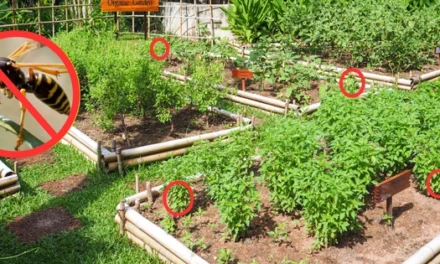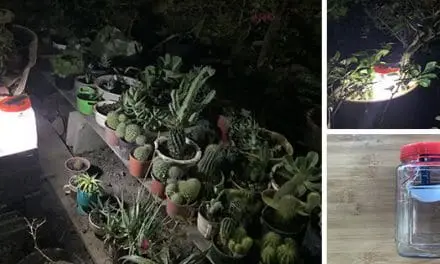Blacksmithing is a skill that the Amish have embraced for centuries. It’s one of the key skills that enables their self-sufficiency and provides resources from the home to the barn to the farms and fields. It’s a simple craft and the primary tools include an anvil, a hand sledge, a forge or air-blown fire pit, tongs to handle the hot metal, and a cooling bucket.
We’re going to cover a variety of projects and skills that the Amish have mastered to keep things going on their farms and to save money. Some of the skills are fairly straightforward and simple and some more complex.
The best way to learn is to spend time with a blacksmith and watch how they work. You could also buy books and videos on blacksmithing or try to find a local class in your area. It’s always easier when you can see a blacksmith in action to get a sense for how the hot metal is heated, handled and crafted.
With that in mind, here are some examples of how the Amish use their blacksmithing skills to make and repair metal parts and tools around their homestead.
Tool Repair and Reinforcement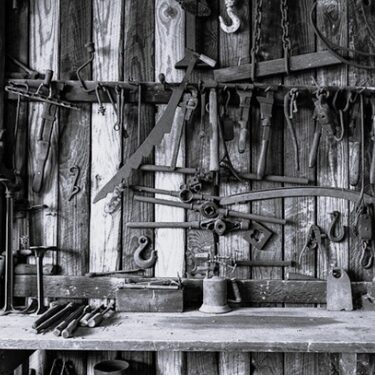
For a society and culture that does so much by hand, hand tools are a critical success factor for the Amish lifestyle. And when the tools break or fail to perform as expected it’s off to the blacksmithing shed. Shovels and picks are repaired, rakes and hoes aligned and set straight. Any hand tool with any amount of metal can and will be repaired by an Amish Blacksmith.
The easiest repairs are straightening or flattening a bent blade, shovel or hoe. New handles are carved from wood and the metal heated and pounded to form around the handle. Saw teeth are pounded flat and realigned and resharpened. Bent crowbars are set straight.
Any tool with metal components can be repaired or in a worst case scenario, heated in the forge to be crafted into a different tool or melted down for a new tool. The telegram is simple. If you can repair a tool instead of buying a new one you can save a lot of money.
>>> 27 Items that will become the new money <<<
Horseshoes
The Amish rely greatly on horsepower and the ability to forge and craft a horseshoe comes with the territory. This isn’t for everyone but if you live on a homestead and have horses in the barn it’s worth considering. There are classes you can take that you can find online and there’s no shortage of YouTube videos about the subject. You can even resize horseshoes when that pony grows into a stallion.
Buggy Hardware
The Amish often repair their buggies in the blacksmith shed, but you don’t need a buggy to find value in blacksmithing. You can make hinges, repair spokes on any wheel; harness fittings for horses, or any other hardware that needs replacement or needs to be improvised.
This is where you might need some specialized blacksmithing tools for rolling hot metal around a hinge, punching holes, bending angles into the metal and other hot metal shaping.
Resurfacing and Sharpening
The Amish take special care of their tools and often that involves resurfacing and resharpening everything from axes and hatchets to knives and machetes. Often they will create the tool from scratch, or more accurately -from scrap.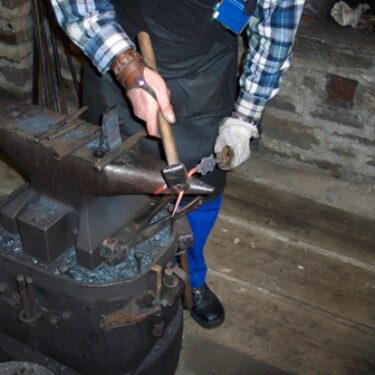
Rusty tools are another possibility, and certain blacksmithing skills can make them look like new. The heated tools are scraped either with a wire brush or on a stone and usually resharpened on a sharpening wheel or with sharpening stones. Old cast iron stove parts are another candidate for resurfacing as heat and moisture builds up layers of rust particularly on the inside.
Customizing Equipment
Whether you’re crafting custom furniture, fixing a tractor or building a shed, you can customize just about any part you need from hinges to door and drawer handles to tractor hitches. The ability to literally create from scratch a custom piece of equipment or hardware not only saves money but can save time, especially if it’s an exotic or unique piece of hardware or equipment.
There are also specialized tools for forming chain links to make your own chains, A critical tool that many blacksmiths use is a blacksmith’s vise.
Many of these methods are described above, while others can be found in detail in The Amish Ways Book. The Amish are true experts in conserving and maximizing resources. I’ve learned a great deal from them that has helped me save money. I wholeheartedly recommend getting this book with 76% discount now (it’s available in physical format, of course) and keeping it close at hand!
What makes a blacksmith’s vise unique is a long, solid metal extension from the top of the vise to the ground. It was usually set on a stone or a concrete pad. This allowed repeated blows of the hammer to transfer to the ground taking stress off of the top of the vise while it held the hot metal firm for shaping.
Fabrication of Household Items
Amish blacksmiths crafted many household items from cast iron cookware to fireplace irons, fireplace grates, even wood stoves, lantern holders, potted plant supports and arches, even wrought iron gates. If there was something needed in or around the house and it was made from metal, a blacksmith could create it.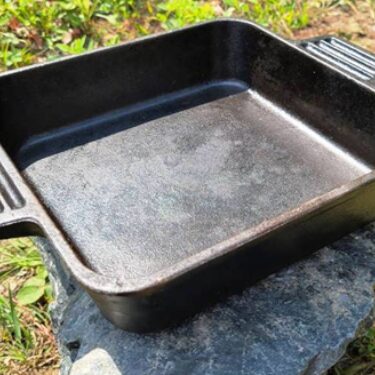
This was another big money-saver especially for cookware and fireplace tools and accessories.
Hardware from Scrap Metal
Hardware is not cheap and Amish blacksmiths made most of the hardware they needed. In fact, one of the first things a beginning blacksmith is taught to make are nails. They typically have a squared or flat side on the pointed end and one end of the hot metal was pounded flat on the anvil to form the head of the nail.
Other hardware includes hinge pins, washers, more nails of all sizes and shapes, and with the proper dies -screws, nuts and bolts.
Hardware was typically made from scrap iron and if there’s one thing an Amish blacksmith never threw away was any kind of metal.
Blacksmithing Safety Gear
Blacksmithing comes with its share of danger. Burns are the most common injury but dropping heavy metal on your foot is a close second.
Here’s a short list of basic blacksmithing safety gear:
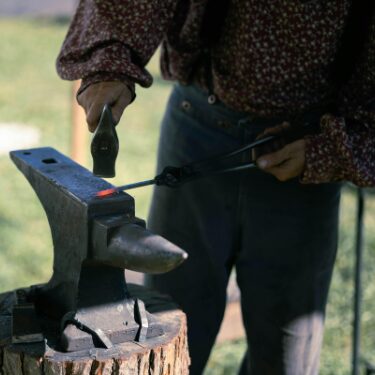
- A blacksmithing apron. Usually covers most of the front of the body and legs and is often made from heavy canvas.
- Blacksmithing gloves. A blacksmith’s hands are always around heat, and the heat can be intense. Leather, insulated gloves designed for blacksmithing are the best bet to keep your fingers and hands from getting burnt. They will often go up your forearm to provide further protection,
- Sparks fly when you’re pounding hot iron and goggles are a good idea. Some blacksmiths wear full face shields to protect their face.
- The blacksmith’s shed is no place for gym shoes. Heavy, leather boots are a wise choice and steel toed boots if you are working with heavy metal.
- First aid kit. Regardless of how careful you are, you’re eventually going to get a burn. A first aid kit or burn kit is a real good idea to have close at hand. Burn gel should be in the kit and some cold water next to the bench for immediate relief.
- A long-sleeved denim or canvass shirt. A long-sleeved shirt is always a good idea. Sparks can land on your forearms and upper arms, and the burns will be immediate.
The Bottom Line
Aside from an upfront investment in equipment, you can keep your blacksmithing adventures going for not a lot of money. Better yet it will continue to save you money through tool repairs, hardware creation and simple household items. We’re estimating about $500 a year, and if you are actively engaged in blacksmithing a whole lot more.
You might need to buy coal from time to time for your forge, and you can often find functional blacksmithing tools and equipment at flea markets and even antique stores. As time goes on you’ll be able to improvise some of your own blacksmithing tools, and most importantly just about anything else you’ll ever need that’s made from metal.
Amish Survival Hacks that Can Help You Thrive in a Long-Term Blackout (Video)
This is Why the Amish Bury Their Food






